Doug Cook's Blog, page 30
May 2, 2013
Chosun e-newsletter Archive Volumn 4 #5 May, 2013
Dear Martial Arts Enthusiast,
Welcome to the May, 2013 edition of the Chosun Taekwondo Academy e-newsletter. Grand Master Richard Chun often exclaims, "Never Give Up!" It is his hard work and life achievements that have not only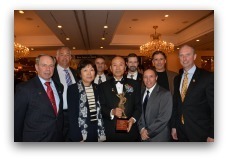 brought him success but have inspired countless students after him on their taekwondo "Path to Excellence." We are very fortunate as a school to have his legacy to follow and pass on to future generations of practitioners. Enjoy reading all the success stories below...
brought him success but have inspired countless students after him on their taekwondo "Path to Excellence." We are very fortunate as a school to have his legacy to follow and pass on to future generations of practitioners. Enjoy reading all the success stories below...
For highlights of 2012 at Chosun, view the Chosun Taekwondo Academy 2012 Retrospective.
Kamsahamnida,
Patty Cook, Editorwww.facebook.com/chosuntkd
Happy Mothers Day! Chosun Taekwondo Academy celebrating 16 years!
Read entire newsletter...
Welcome to the May, 2013 edition of the Chosun Taekwondo Academy e-newsletter. Grand Master Richard Chun often exclaims, "Never Give Up!" It is his hard work and life achievements that have not only
 brought him success but have inspired countless students after him on their taekwondo "Path to Excellence." We are very fortunate as a school to have his legacy to follow and pass on to future generations of practitioners. Enjoy reading all the success stories below...
brought him success but have inspired countless students after him on their taekwondo "Path to Excellence." We are very fortunate as a school to have his legacy to follow and pass on to future generations of practitioners. Enjoy reading all the success stories below...For highlights of 2012 at Chosun, view the Chosun Taekwondo Academy 2012 Retrospective.
Kamsahamnida,

Patty Cook, Editorwww.facebook.com/chosuntkd
Happy Mothers Day! Chosun Taekwondo Academy celebrating 16 years!
Read entire newsletter...
Published on May 02, 2013 05:28
April 15, 2013
Grand Master Richard Chun - A Biography by Chosun Student Benjamin Taesung Durgin - Bodan essay April 2013
Grand Master Richard Chun is a great martial artist. I was inspired by his book, Spirit and Practice Beyond Self-Defense. It was an exciting and emotional story. After I read the book, I felt less
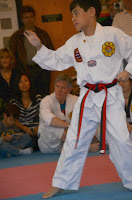 nervous about the black belt promotion test. Instead, I feel more confident. I have learned a lot about Grand Master Chun, but I also learned a lot about Taekwondo. This is what I learned about Grand Master Chun.
nervous about the black belt promotion test. Instead, I feel more confident. I have learned a lot about Grand Master Chun, but I also learned a lot about Taekwondo. This is what I learned about Grand Master Chun.Master Chun is one of six boys and two girls. His father was a hard worker and his mother stayed home to take care of the family. During childhood, Master Chun became a daejang, or a leader of a gang of boys. He became a daejang by doing something very dangerous and was injured. He was punched by a kid and wanted revenge, so he signed up for Taekwondo lessons. He had to work part time jobs to afford the lessons. Every ten days, he had to mop the floor of the dojang, so he came early to do his job quickly. He kept Taekwondo a secret from his friends because he wanted revenge. A few months later, he became a green belt. The next school day, he looked for the guy he wanted to revenge, but the guy did not accept his challenge. He let Master Chun punch him. But, Master Chun became friends with him, instead. Master Chun learned from his master that Taekwondo is not for fighting and revenge, but it is for peace.
During the Korean War, his family escaped to Cheju Island. While he was there, he trained Taekwondo by himself. He compared himself to a beautiful mountain called, Mount Hallasan because his knowledge was still inside of him no matter where he was like the mountain was covered in fog. I thought that was a useful comparison.
When the Korean War was over, Master Chun was happy. He was proud of his parents for their strength. Master Chun moved to Seoul. He went to Yonsei University and graduated in 1957. He started to compete in tournaments and learned from his master how to be a better competitor. He learned that to win one hundred percent of the time, he needs to understand himself and understand his opponent. I thought that was great advice. He won the tournament. His trophy is displayed on a shelf at Yonsei University.
Master Chun signed up as one of two hundred candidates for a sales job for Air France. He was one of two people who got the job. He became a district manager. Patience, perseverance and hard work helped him get this job. He learned these things from Taekwondo. This taught me that Taekwondo does not only help me get a belt. It helps me in other ways in life.
Master Chun moved to the United States in 1962 when he was twenty-eight years old. He earned his Master Degree in Business and Marketing from George Washington University. He also earned a Ph.D. in education. He taught Taekwondo in the United States at Sigward’s Academy. His first class was in a dusty room with only ten students. He worked as a waiter in a Chinese restaurant to earn money. Master Chun never gives up and shows a lot of perserverance.
In 1964, he started a new school with twenty-five students. He noticed that his students were not doing their side-kicks correctly. He made changes to his program and added twenty minute warm-ups in the beginning of class. He believed that his students needed better flexibility and exercise to master their techniques. This tells me that Master Chun is a great teacher.
One night, at a bar, there were a group of men who fought him. Master Chun defended himself and hurt them, and the men ran away. Then two weeks later, Master Chun apologized to the men that he hurt because he did not feel good that he had to hurt them. This tells me that Master Chun is a good man who always makes the right choices.
In 1967, Master Chun was the organizer of The First Universal Open Championship. It included all kinds of martial arts and had 450 participants. Master Chun’s favorite student named Joe Hayes won first place.
In 1973, Master Chun was the head coach of the USA Taekwondo team for the first World Taekwondo Championships in Seoul. Korea’s team won first place, Master Chun’s USA team came in second place and Mexico and China came in third. He used this time to teach his students about Korean food, to travel Korea to share his story to his students about how he found Taekwondo. I learned from this that Master Chun cares about his students and teaches them well.
In 1980, Master Chun served as President of the United States Taekwondo Association. He assisted in organizing Taekwondo as an event in the 1988 Olympics. In 1985, he became a special assistant to the president of the World Taekwondo Federation. Master Chun was inducted in the Black Belt Hall of Fame by Black Belt Magazine in 1979 and 2004. He was inducted Taekwondo Hall of Fame by Taekwondo Times Magazine. Master Chun served as District Governor for the Lions Club. He is married with two children.
This is what I learned about Grand Master Richard Chun. As I said before, Master Chun is a good man. He is a true martial artist and displays everything that I am learning from Taekwondo such as courtesy, integrity, perseverance, self control and indomitable spirit, plus more. I enjoyed reading and learning about Master Chun. Not only did I learn about his life, I learned a lot about the meaning of Taekwondo and how I can apply it in my life as I grow up.
Published on April 15, 2013 16:28
A Retrospective of my Taekwondo Training by Chosun Student Frank Formosa First Dan Black Belt - April, 2013
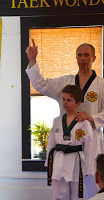 When I think back at how far I've come since I started Taekwondo, it makes me very proud. I think about when I was in kickstart, all excited about learning Taekwondo. I made many new friends, and we are still friends today.
When I think back at how far I've come since I started Taekwondo, it makes me very proud. I think about when I was in kickstart, all excited about learning Taekwondo. I made many new friends, and we are still friends today.When I moved up to regular classes, I really felt like I was growing up. It felt good learning new things because I felt like I was starting to get bored. It made me feel stronger to learn new forms, new punches and kicks, and the first time I broke the wood at the promotion test, I felt like Superman!
As I look at pictures of myself, from white belt to yellow and orange, all the way up to Bodan now, I can't believe how far I've come. It's been a lot of hard work and at times my Mom and Dad have needed to push me to keep me focused. There have been times when I might not have felt like training and my Dad would tell me, "It's up to you but I think you'll feel better if you go." I would listen, and during class, I would think to myself, "Dad was right, I'm glad I came!"
I think about the time I was chosen for Student of the Month in July 2011. That was the best trophy I've ever gotten, because it showed how hard I worked. I hope to earn another one someday.
I remember the time I went to the Haddock Tournament in 2012 with other Chosun students. I really felt cool. I thought our team was going to win everything. I entered for forms, and even though I didn't win, I felt great just to be able to participate. I remember everybody telling me,"Great job Frank!" and that made me very happy.
I think about how much fun I had at the Chosun Dinner Dance the last 2 years. Being with many of my friends is always a lot of fun. Receiving the Hwarang award made me feel proud.
Now that I've reached my 1st Dan Black Belt promotion test, I'm ready to try as hard as I can to make Master Cook, Grand Master Chun, my family, and most of all, myself, very proud. I'm working very hard, so I know I will not let myself down.
Published on April 15, 2013 16:07
"Journey to Black" Bodan Essay by Chosun Student Elissa Jones April, 2013
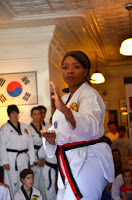 The day that I knew I had to study Taekwondo was the day that it called to me. I was sitting on the sidelines waiting to drop off Timothy for class and while I sat there, I observed three women doing Koryo. In sync, they moved gracefully and when the form came to a cadence Master Cook said, “Koryo Joombi.” I watched their arms and hands move strongly yet delicately and tears came to my eyes. I thought it was one of the most beautiful things I had ever seen. That was the moment I knew I had to train. After that class, my son Timothy looked at me and said, “Families train, Mommy” and that was all I needed to hear. That very same week, I flew down Main Street with my checkbook in hand and signed up during Spring Fest. Master Cook said that I would remember the day I signed up for the rest of my life because that was the day my life would change. He was right. It was that day that I chose to change and embrace living. Three years ago, I did not realize how greatly Taekwondo would affect my life or how greatly it would change me.
The day that I knew I had to study Taekwondo was the day that it called to me. I was sitting on the sidelines waiting to drop off Timothy for class and while I sat there, I observed three women doing Koryo. In sync, they moved gracefully and when the form came to a cadence Master Cook said, “Koryo Joombi.” I watched their arms and hands move strongly yet delicately and tears came to my eyes. I thought it was one of the most beautiful things I had ever seen. That was the moment I knew I had to train. After that class, my son Timothy looked at me and said, “Families train, Mommy” and that was all I needed to hear. That very same week, I flew down Main Street with my checkbook in hand and signed up during Spring Fest. Master Cook said that I would remember the day I signed up for the rest of my life because that was the day my life would change. He was right. It was that day that I chose to change and embrace living. Three years ago, I did not realize how greatly Taekwondo would affect my life or how greatly it would change me.With each belt level came a new level of awakening within me. Taekwondo enabled me to persevere through major life events as well as clean up the clutter in my life. When I was a white belt, I was afraid of getting hurt and of hurting other people. I refused to do a Ho Sin Sool on Olga one day because I thought I was being mean. At white belt Master Cook taught me that I was worth defending and because of it, the day I got my yellow was one of the most important days of my life. I realized that I could do anything that I put my mind to.
At each belt level I learned something new. At yellow belt, I learned to listen to my body, respect it, and give it what it needs. At orange belt, I learned to have courage in the face of adversity. I had to re-prioritize my life and Taekwondo offered me a safe place where I could just “be”. At green belt, I learned humility, to swallow my pride, and was reminded that courtesy is needed through all things. At blue belt, I started to finally transform physically and actually look like I was doing Taekwondo and not just flailing around. At purple belt, I grew confidence. However, it wasn't until red and brown belt that I was challenged the most.
At red belt, I found out I was pregnant and had to decide if I was serious about Taekwondo. I decided that Taekwondo had always remained true to me and if I stayed true to it, Taekwondo would never let me down. Therefore, I trained throughout my pregnancy and during that time I grew so much spiritually. At brown belt, I was really challenged physically. It was hard returning to training after having a baby. At the advice of my son Timothy, who told me, “Mommy when you come back... come back fierce!” I decided to listen to my body but push it just far enough in order to grow stronger. At high brown belt, I became hungry for the true essence of Taekwondo. Now at bodan, I am being polished and just recently adopted the mantra, “I am strong, I am smart, and I am beautiful.”
From white belt to now my life has taken many drastic turns and all the while I had a safe place in the Dojang. During my training, I had surgery, got divorced, engaged, and had a baby. Clearly a whole lot can happen in three years. I am just grateful that I had Taekwondo and my Chosun family with me along the way. I am also grateful to my kids Mika and Timothy who always encouraged me to never give up on myself, just as I am grateful to Master Cook for showing me how to fall in life and in the Dojang. Reflecting on the past three years of my life, I realize that I am no longer the frightened lady wrapped inside of the white belt. I laugh about the day I told Olga I felt too mean to do a Ho Sin Sool on her. I laugh because I am no longer that scared fragile woman who was afraid to claim her space and defend herself. Today, I am strong and looking forward to getting stronger. Today, I am a yellow belt dressed in black. Today, I know I can accomplish anything.
Published on April 15, 2013 09:48
April 3, 2013
Promoting, Supporting and Preserving Traditional Taekwondo by Master Doug Cook
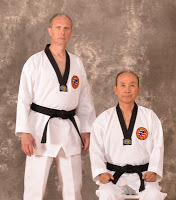 Taekwondo, literally translated, can be defined as “foot, hand, way” or “the way of smashing with hands and feet.” Such descriptive nomenclature understandably implies a curriculum rich in self-defense. Too often, however, this is simply not the case. Given the current popularity of sport competition in the martial arts, many techniques of defensive value have been stripped away or forfeited altogether in favor of those certain to score in the ring. While the thirst for Olympic gold has clearly played a significant role in catapulting taekwondo into the forefront, it should be remembered that the native Korean martial art contains over 3200 distinct techniques. These include a multitude of blocks, kicks, and strikes in addition to a variety of leg sweeps, joint locks and throws, truly qualifying it as a complete form of self-defense.
Taekwondo, literally translated, can be defined as “foot, hand, way” or “the way of smashing with hands and feet.” Such descriptive nomenclature understandably implies a curriculum rich in self-defense. Too often, however, this is simply not the case. Given the current popularity of sport competition in the martial arts, many techniques of defensive value have been stripped away or forfeited altogether in favor of those certain to score in the ring. While the thirst for Olympic gold has clearly played a significant role in catapulting taekwondo into the forefront, it should be remembered that the native Korean martial art contains over 3200 distinct techniques. These include a multitude of blocks, kicks, and strikes in addition to a variety of leg sweeps, joint locks and throws, truly qualifying it as a complete form of self-defense.Consequently, in an effort to preserve the formal nature and defensive infrastructure of taekwondo as originally intended by a portion of its founders, a number of training institutes now promote what is referred to as traditional taekwondo; a measurably alternative style emphasizing a core philosophy rich in basic technique, poomsae and authentic defensive strategy with little or no emphasis on competition thus divorcing it somewhat from its sportive mate.
Nevertheless, this classification can be construed as somewhat of a misnomer since the history or “tradition” of taekwondo as it exists today, is relatively short with much of it being devoted to its promotion as a world sport. Like it or not, the answer to this paradox lays in the fact that taekwondo owes much of its pedigree to foreign influences, some of which are rooted in Funikoshi’s Shotokan karate-do, Ushieba’s aikido, Kano’s Kodokan judo, and to a lesser degree, Chinese gungfu. This is no accident given the geopolitical climate that existed in Korea during the turbulent years of the early to mid 1900’s. In fact, to the experienced eye, many of the martial applications taught today, having been handed down over the decades if not centuries, bear a striking resemblance to those fashioned by the founders mentioned above. Subsequently, in its evolutionary stage, prior to its promotion as an Olympic sport, taekwondo contained a complete palate of defensive techniques. With this in mind, the notion of taekwondo having a “traditional” component based on strong basic skills, poomsae and self-defense, predating the creation of organizations promoting its sportive component, materializes.
Yet, it should be understood that the defensive tactics of traditional taekwondo and the training elements that support them do not alone satisfy the conditions necessary to formalize taekwondo as a traditional martial art. Rather, the practice of poomsae, coupled with the basic fundamentals and the philosophical underpinnings that comprise them, represents a central pillar of the art and is a direct reflection of its unique character and heritage. While it is true that many of the forms practiced by the taekwondoist mirror those of rival Asian martial arts, it only goes to prove that in the past diverse martial disciplines from the region drew from a common well in an effort to construct practical, combat proven formal exercises. While these exercises by now have largely been modified and canonized against the backdrop of Korean martial culture, they embody universal defensive movements that date back to antiquity further supporting the traditional nature of taekwondo.
Moreover, a traditional martial art should embrace an overarching philosophy governed by a set or moral principles that limit its use except in situations of grave necessity. In addition, this philosophical doctrine, while enhancing the character of the martial artist, should reflect the cultural values extant in the discipline’s nation of origin. In the case of traditional taekwondo, these ethical guidelines date back to the seventh century when warriors of the Hwarang, an elite corps of young nobles, sought guidance from the Buddhist monk Wonkwang Popsa before entering battle. This moral compass continues to be practiced by the taekwondoist today.
To further add veracity to the concept of taekwondo as a traditional martial art, it is helpful to establish that a militaristic legacy exists using the available evidence at hand.
History demonstrates that for centuries Korean warriors have stood ready to defend their nation at a moment’s notice. In 1592, fighting monks, keepers of martial arts skills that had all but vanished during the pro-Confucian Chosun Dynasty, were recruited in an effort to resist a massive Japanese force lead by Toyotomi Hideyoshi intent on using the Korean peninsula as a stepping stone to China.
In 1953, taekwondo further crystallized into a legitimate form of self-defense when General Choi Hong Hi created the 29th Infantry Division by marrying regulation drills with martial arts training marking it as a truly unique entity within the Korean military.
But the great wheel of progress in the development of a unified Korean battle art with a complete defensive strategy did not stop there. In 1962, President Go Din Diem of South Vietnam requested that the Korean government send representatives of their native martial art to instruct the Vietnamese military in taekwondo. This initial group was lead by Major Tae Hee Nam of the Oh Do Kwan. In fact, this training became so effective that the Viet Cong directed their troops to retreat rather than confront the taekwondo-trained soldiers.
Contrary to the historical evidence at hand, critics who support the perception that taekwondo has evolved into nothing more than a popular, modern combat sport continue to debate the fundamental defensive value of the art. To further compound this issue, it is becoming increasingly difficult to locate an instructor faithful to the principles unique to traditional taekwondo. This dilemma is made all the more poignant in an article published a number of years ago by the late writer and martial arts instructor Jane Hallender entitled, Is Taekwondo a Sport or a Self-defense System? Acutely aware of the differences involved, Hallender warned, “There is more to taekwondo then just tournament competition. From kicks, to hand strikes, to throws, to joint locks, taekwondo possesses an array of defensive measures designed to thwart virtually any kind of attack. The most difficult part will not be learning the self-defense techniques, but finding a taekwondo instructor who still teaches them.”
With the above in mind, we at the Chosun Taekwondo Academy, in tandem with others globally who share a similar vision, have steadfastly attempted to promote, support and preserve this alternative entity that is traditional taekwondo.
For instance, at Chosun we adhere to a stringent curriculum composed of a repeating template that increases in complexity throughout the various belt levels; promotion from one rank to the next is predicated on proficiency in an escalating series of basics, one, two and three-step sparring, self-defense drills, poomsae, sparring and breaking skills. Students are also expected familiarize themselves with Korean terminology and the philosophy associated with their forms. There is nothing haphazard about our program; every student knows precisely what is expected of them in order to achieve advancement. All requirements are clearly written out to avoid confusion and preserved as password-protected downloads on our web site to be included in a training journal all students are required to maintain.
And since poomsae embodies the pinnacle of tradition in taekwondo, as a United States Taekwondo Association affiliate school under the direction of Grandmaster Richard Chun, we perform the eight Taegeuk and Palgwe set of poomsae, in conjunction with the traditional Moo Duk Kwan and required Kukkiwon black belt Yudanja series. We also practice the Kibon set, Pyung-Ahn hyung and several of the ITF tuls, although these are not required for promotion.
Lastly, at Chosun we highlight the self-defense, physical fitness, and self-enrichment components of taekwondo; this is in keeping with taekwondo as a martial way or a path to excellence. In addition, we amplify our practice with meditation and ki (internal energy) development exercises. While our school attends several tournaments a year, we do not view the classical martial arts simply as sport and so do not focus merely on competition. Instead, we look to fortify internal resolve, strength in the face of adversity and defensive skills that can effectively be relied upon to diffuse a confrontation that spirals out of control beyond the confines of verbal mediation. Then, in an effort to reach outside the walls of our dojang, we offer a series of technical seminars and self-defense courses to martial arts schools and civic groups at little or no charge.
The battle to maintain taekwondo as a traditional martial art is, ultimately, not an easy one. Students are required to learn far more than the few well-placed kicks favored in a competitive environment. Rather, the practice should be viewed as a vast mosaic with many interconnecting elements. If any one element is deficient, the remainder will likewise dissolve in failure; all must act in concert. The quest to develop proficiency is a demanding process that few have the time and, often, the resiliency to put forth. This makes the successful journey all the more dear to the worthy practitioner capable and willing to invest the determination required to support a meaningful education in traditional taekwondo. However, by following the above guidelines and unyieldingly offering a curriculum rich in technical skill to color and black belts alike, the traditions of taekwondo will remain strong going into the future.
Master Doug Cook , a 6th dan black belt, is head instructor of the Chosun Taekwondo Academy located in Warwick, New York, a senior student of Grandmaster Richard Chun, and author of three best-selling books entitled: Taekwondo…Ancient Wisdom for the Modern Warrior, Traditional Taekwondo - Core Techniques, History and Philosophy, and Taekwondo–A Path to Excellence, all published by YMAA of Boston. Master Cook and Grandmaster Chun have recently completed a new book, Taekwondo Black Belt Poomsae: Original Koryo and Koryo, targeted for publication in July of 2013. Master Cook can be reached for lectures, workshops or questions at www.chosuntkd.comor info@chosuntkd.com.
Published on April 03, 2013 17:41
Chosun e-newsletter archive Volumn 4 #4 April, 2013
Dear Martial Arts Enthusiast,
Welcome to the April, 2013 edition of the Chosun Taekwondo Academy e-newsletter. The changing seasons and the coming of spring can signal a time of fresh beginnings and new initiatives. Along these lines, the Chosun Taekwondo Academy is instituting a new program, aptly named, AMVets Taekwondo to address in some measure the growing plight of our returning American veterans. There is NO CHARGE for this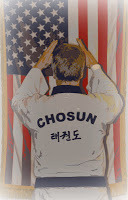 program. Please read more about the initiative below and pass the information on to those who you think will benefit from it. Also don't miss the "Martial Musings" section written this month by Jeff Rosser, a martial arts instructor and frequent contributor to major international martial arts publications who currently resides in South Korea. Lastly, make sure to read "All Things Korean"... Korea is coming to Warwick in May!
program. Please read more about the initiative below and pass the information on to those who you think will benefit from it. Also don't miss the "Martial Musings" section written this month by Jeff Rosser, a martial arts instructor and frequent contributor to major international martial arts publications who currently resides in South Korea. Lastly, make sure to read "All Things Korean"... Korea is coming to Warwick in May!
For highlights of 2012 at Chosun, view the Chosun Taekwondo Academy 2012 Retrospective.
Kamsahamnida,
Patty Cook, Editorwww.facebook.com/chosuntkd
Chosun Taekwondo Academy celebrating 16 years!
Read entire newsletter...
Welcome to the April, 2013 edition of the Chosun Taekwondo Academy e-newsletter. The changing seasons and the coming of spring can signal a time of fresh beginnings and new initiatives. Along these lines, the Chosun Taekwondo Academy is instituting a new program, aptly named, AMVets Taekwondo to address in some measure the growing plight of our returning American veterans. There is NO CHARGE for this
 program. Please read more about the initiative below and pass the information on to those who you think will benefit from it. Also don't miss the "Martial Musings" section written this month by Jeff Rosser, a martial arts instructor and frequent contributor to major international martial arts publications who currently resides in South Korea. Lastly, make sure to read "All Things Korean"... Korea is coming to Warwick in May!
program. Please read more about the initiative below and pass the information on to those who you think will benefit from it. Also don't miss the "Martial Musings" section written this month by Jeff Rosser, a martial arts instructor and frequent contributor to major international martial arts publications who currently resides in South Korea. Lastly, make sure to read "All Things Korean"... Korea is coming to Warwick in May!For highlights of 2012 at Chosun, view the Chosun Taekwondo Academy 2012 Retrospective.
Kamsahamnida,

Patty Cook, Editorwww.facebook.com/chosuntkd
Chosun Taekwondo Academy celebrating 16 years!
Read entire newsletter...
Published on April 03, 2013 04:33
March 2, 2013
Chosun e-newsletter archive Volumn 4 # 3 March, 2013
Dojang News and Events
Chosun Belt Promotion Test
Sunday February 24, 2013
Warwick Town Hall, Warwick, NY
Chosun hosted its 61st Belt promotion test and it was by far the largest. Excitement was high and technique was sharp as students displayed their skills. Our illustrious judging panel included: Master Joe Preira, Master Erica Linthorst, Master Danielle Roche, Master Brad Shipp, Master Doug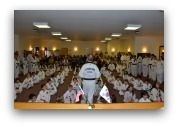 Cook, Grandmaster Won Kuk Kim, Master Terrie Testa, and Master Richard Tamian. A whole school photo was taken that will appear in TaeKwonDo Times magazine. Congratulations to Chosun students on their achievements.
Read entire newsletter...
Cook, Grandmaster Won Kuk Kim, Master Terrie Testa, and Master Richard Tamian. A whole school photo was taken that will appear in TaeKwonDo Times magazine. Congratulations to Chosun students on their achievements.
Read entire newsletter...
Chosun Belt Promotion Test
Sunday February 24, 2013
Warwick Town Hall, Warwick, NY
Chosun hosted its 61st Belt promotion test and it was by far the largest. Excitement was high and technique was sharp as students displayed their skills. Our illustrious judging panel included: Master Joe Preira, Master Erica Linthorst, Master Danielle Roche, Master Brad Shipp, Master Doug
 Cook, Grandmaster Won Kuk Kim, Master Terrie Testa, and Master Richard Tamian. A whole school photo was taken that will appear in TaeKwonDo Times magazine. Congratulations to Chosun students on their achievements.
Read entire newsletter...
Cook, Grandmaster Won Kuk Kim, Master Terrie Testa, and Master Richard Tamian. A whole school photo was taken that will appear in TaeKwonDo Times magazine. Congratulations to Chosun students on their achievements.
Read entire newsletter...
Published on March 02, 2013 17:15
February 4, 2013
Chosun e-newsletter archive Volumn 4 # 2 February, 2013
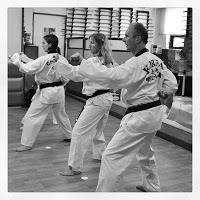 Dear Martial Arts Enthusiast,
Dear Martial Arts Enthusiast, Welcome to the February, 2013 edition of the Chosun Taekwondo Academy e-newsletter.
In spite of the the cold winter weather, the Chosun spirit has remained strong and we warmly welcome the many new students who have joined the academy since the beginning of the year. The recently added color belt and kumdo classes have been very successful and provide a great way to round out your training week. (For more details, see information below) We have always felt fortunate as a school to attract thoughtful students and people who lead rewarding lives outside the dojang. In that spirit, we have introduced a new feature in this newsletter called Student Spotlight. If you have a story or achievement to share, please send the information and photo to: info@chosuntkd.com . Also don't forget to read Critic's Corner by Jake Garrett, another recent addition to the newsletter. If you have read a book that pertains to taekwondo or the martial arts in general we would gladly print your review. Please send it to: info@chosuntkd.com
For highlights of 2012 at Chosun, view the Chosun Taekwondo Academy 2012 Retrospective.
Kamsahamnida,
 Patty Cook, Editor
www.facebook.com/chosuntkd
Patty Cook, Editor
www.facebook.com/chosuntkd
Happy Valentine's Day
Read entire newsletter...
Published on February 04, 2013 08:25
January 1, 2013
Chosun e-newsletter archive Volumn 4 #1 January, 2013
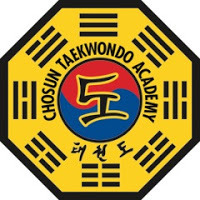
 Dear Martial Arts Enthusiast,
Dear Martial Arts Enthusiast, Welcome to the January, 2013 edition of the Chosun Taekwondo Academy e-newsletter. Aristotle said, "We are what we repeatedly do. Excellence, therefore, is not an act but a habit." As we pause to look back over the past year and anticipate the new one, we see that the students and instructors of Chosun embody this sentiment in a myriad of ways. This is what makes Chosun strong and why we are all on a "path to excellence" together. In times of turbulence or calm,the
five tenets of Taekwondo , Courtesy, Integrity, Perseverance, Self-Control and Indomitable Spirit, serve as the bedrock principles that never change and help us strive to meet the challenges that we may confront. May peace and prosperity be yours in the coming year.
For highlights of 2012 at Chosun, view the Chosun Taekwondo Academy 2012 Retrospective.
Kamsahamnida, Patty Cook, Editor www.facebook.com/chosuntkd
Happy New Year! 새복 많이 받으세요.
Se Bok Mane Ba Da Se Yo
Read entire newsletter...
Published on January 01, 2013 11:45
December 28, 2012
The Vital Role of Meditation in Tae Kwon Do
by Master Doug Cook
TaeKwonDo Times Magazine November, 2012
"Traditions" column
(appears in every edition)
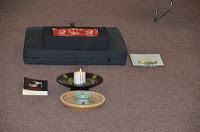 Observing a martial artist seated quietly in a meditative posture bears little resemblance to the skilled defender most assume him to be. Meditation, however, plays a vital role in preparing the taekwondoist, both mentally and spiritually, for the demands of self-defense, the benefits of ki development, and a potential leap in performance through the practice of visualization.
Observing a martial artist seated quietly in a meditative posture bears little resemblance to the skilled defender most assume him to be. Meditation, however, plays a vital role in preparing the taekwondoist, both mentally and spiritually, for the demands of self-defense, the benefits of ki development, and a potential leap in performance through the practice of visualization.
In order to act rapidly in the face of a threat that has escalated beyond verbal mediation, the mind and the body must reactrather than anticipate; this important principle lies at the core of traditional defensive strategy. Making the false assumption that an attacker will execute a punch when, in truth, his intention is to kick, is certain to result in severe injury to the defender. To appreciate the value of meditation as it applies to this component of self-defense, one needs look no further than the stillness of a serene pool of water reflecting the image of a full moon. Because the surface is unbroken by ripples, the image is pure and undistorted. The mind of the martial artist can be conditioned to act in a similar fashion. Through the sincere and diligent practice of meditation, the taekwondoist will develop an uncanny ability to react to an unprovoked attack rather than anticipate a potential false move. How is this possible? Subscribe to TaeKwonDo Times Magazine to read entire column
TaeKwonDo Times Magazine November, 2012
"Traditions" column
(appears in every edition)
 Observing a martial artist seated quietly in a meditative posture bears little resemblance to the skilled defender most assume him to be. Meditation, however, plays a vital role in preparing the taekwondoist, both mentally and spiritually, for the demands of self-defense, the benefits of ki development, and a potential leap in performance through the practice of visualization.
Observing a martial artist seated quietly in a meditative posture bears little resemblance to the skilled defender most assume him to be. Meditation, however, plays a vital role in preparing the taekwondoist, both mentally and spiritually, for the demands of self-defense, the benefits of ki development, and a potential leap in performance through the practice of visualization. In order to act rapidly in the face of a threat that has escalated beyond verbal mediation, the mind and the body must reactrather than anticipate; this important principle lies at the core of traditional defensive strategy. Making the false assumption that an attacker will execute a punch when, in truth, his intention is to kick, is certain to result in severe injury to the defender. To appreciate the value of meditation as it applies to this component of self-defense, one needs look no further than the stillness of a serene pool of water reflecting the image of a full moon. Because the surface is unbroken by ripples, the image is pure and undistorted. The mind of the martial artist can be conditioned to act in a similar fashion. Through the sincere and diligent practice of meditation, the taekwondoist will develop an uncanny ability to react to an unprovoked attack rather than anticipate a potential false move. How is this possible? Subscribe to TaeKwonDo Times Magazine to read entire column
Published on December 28, 2012 12:06



